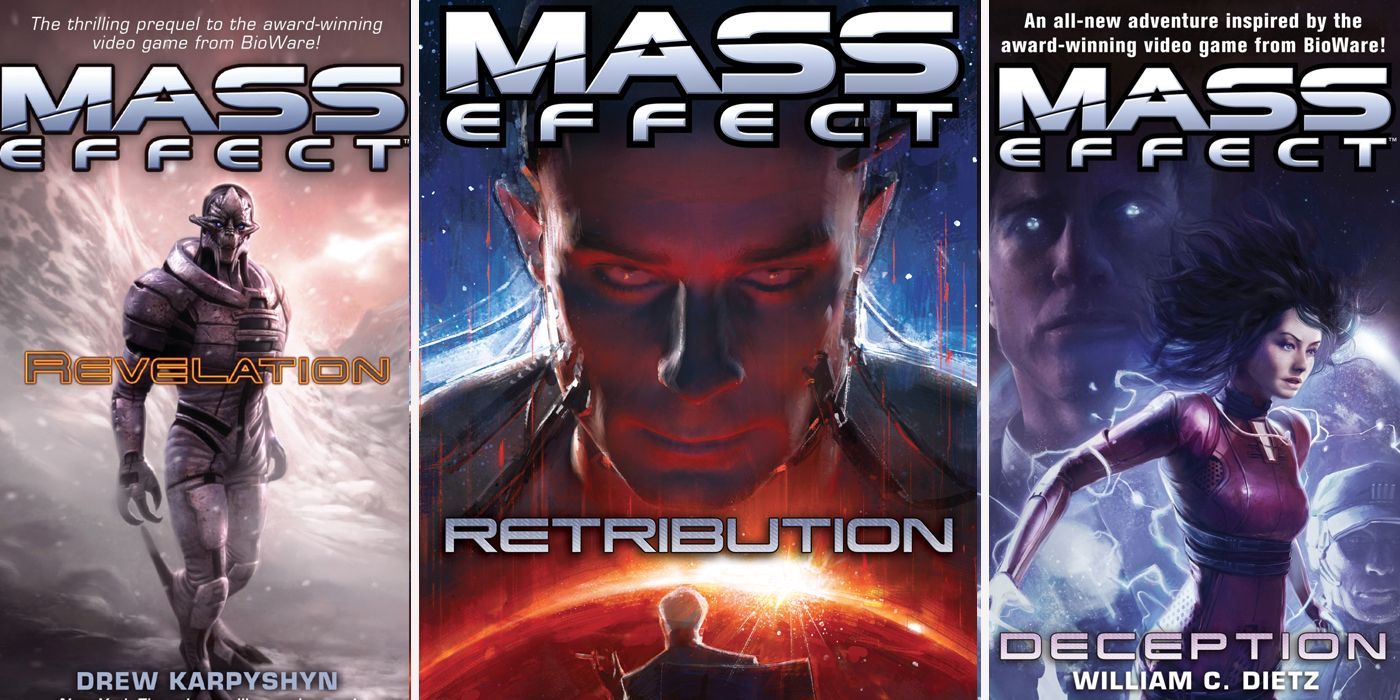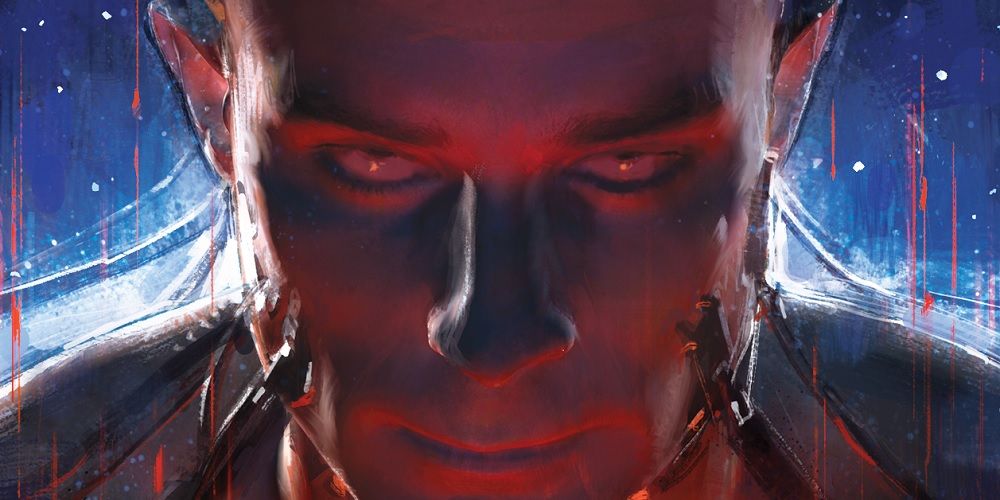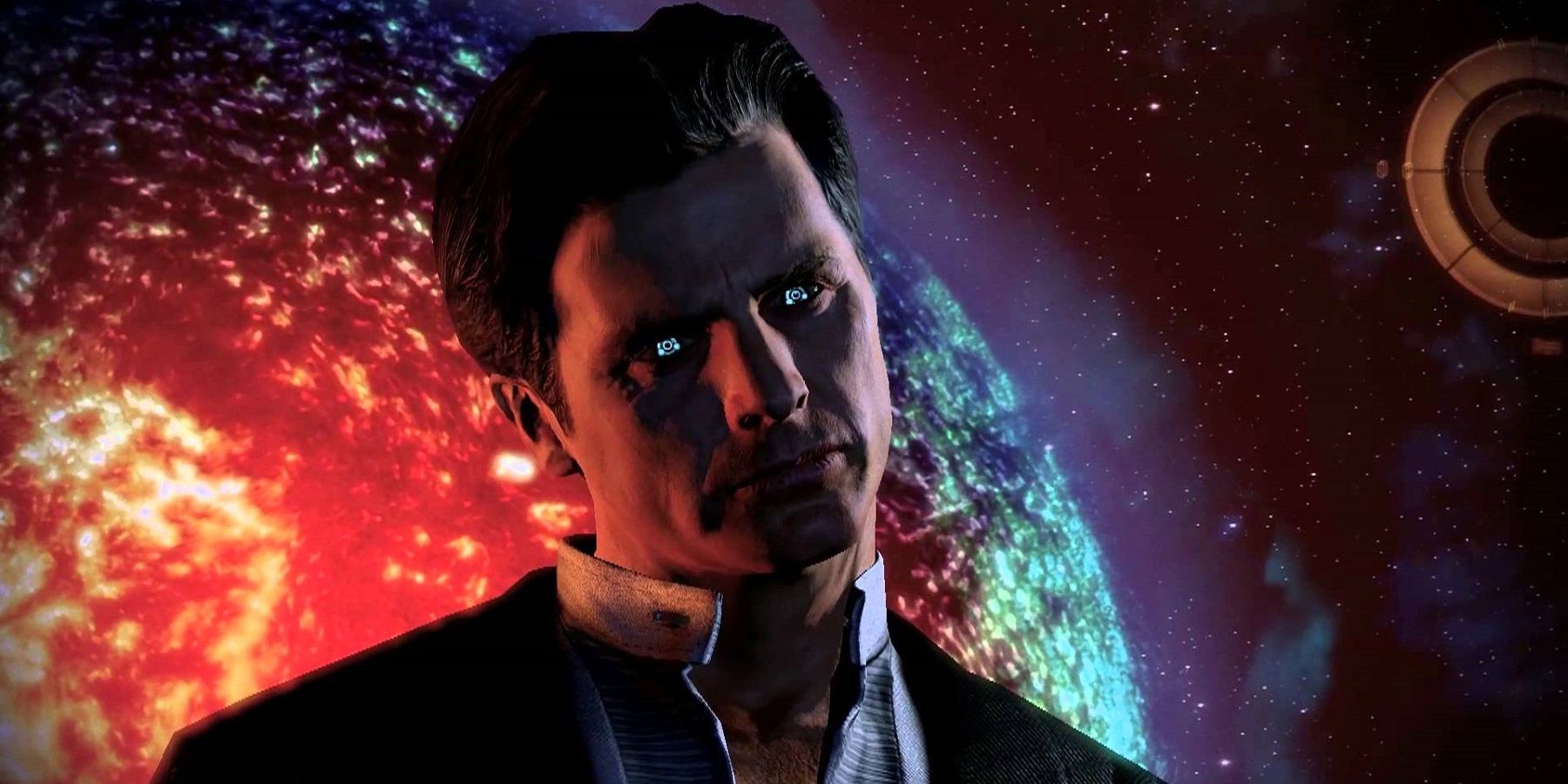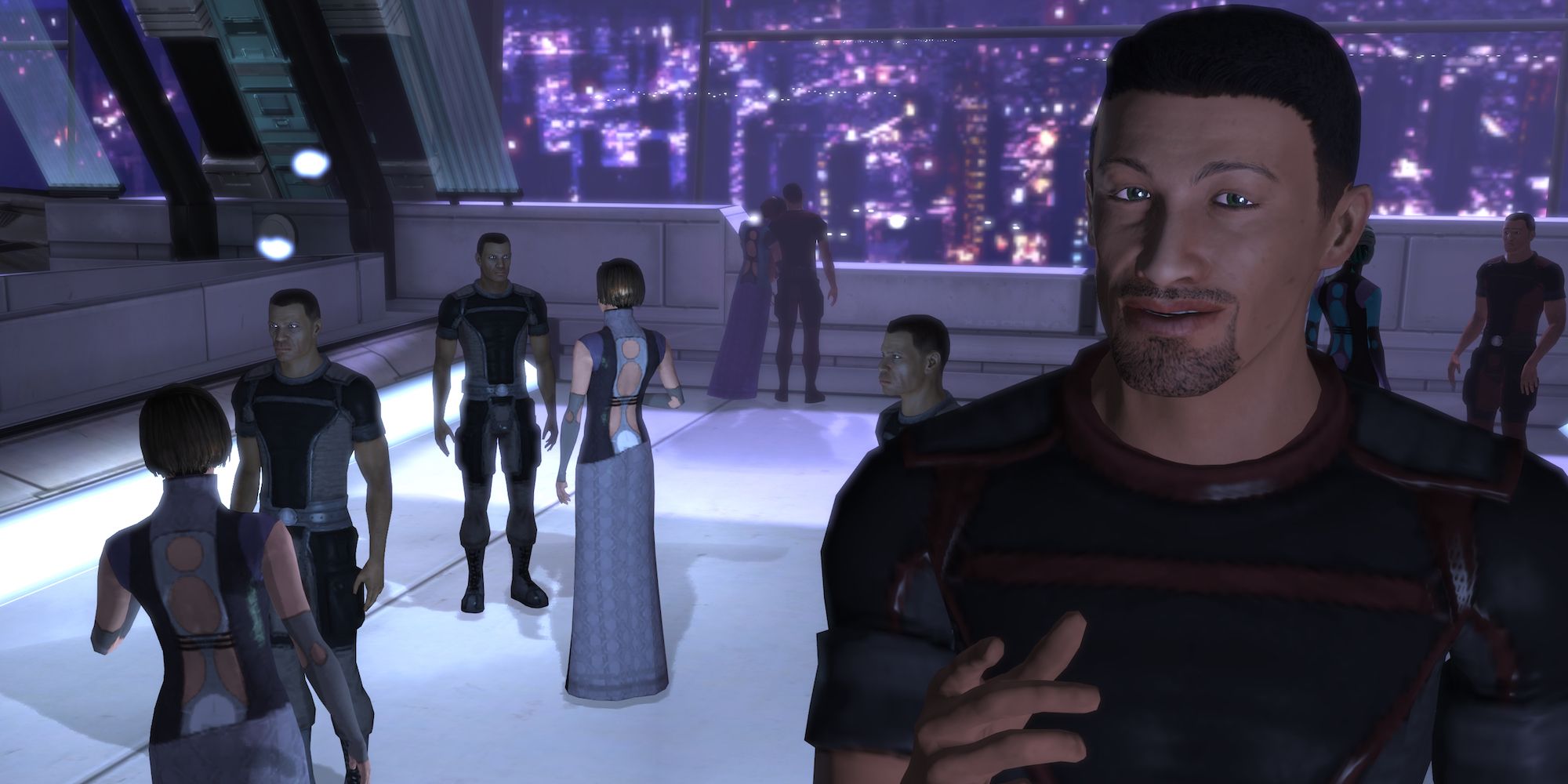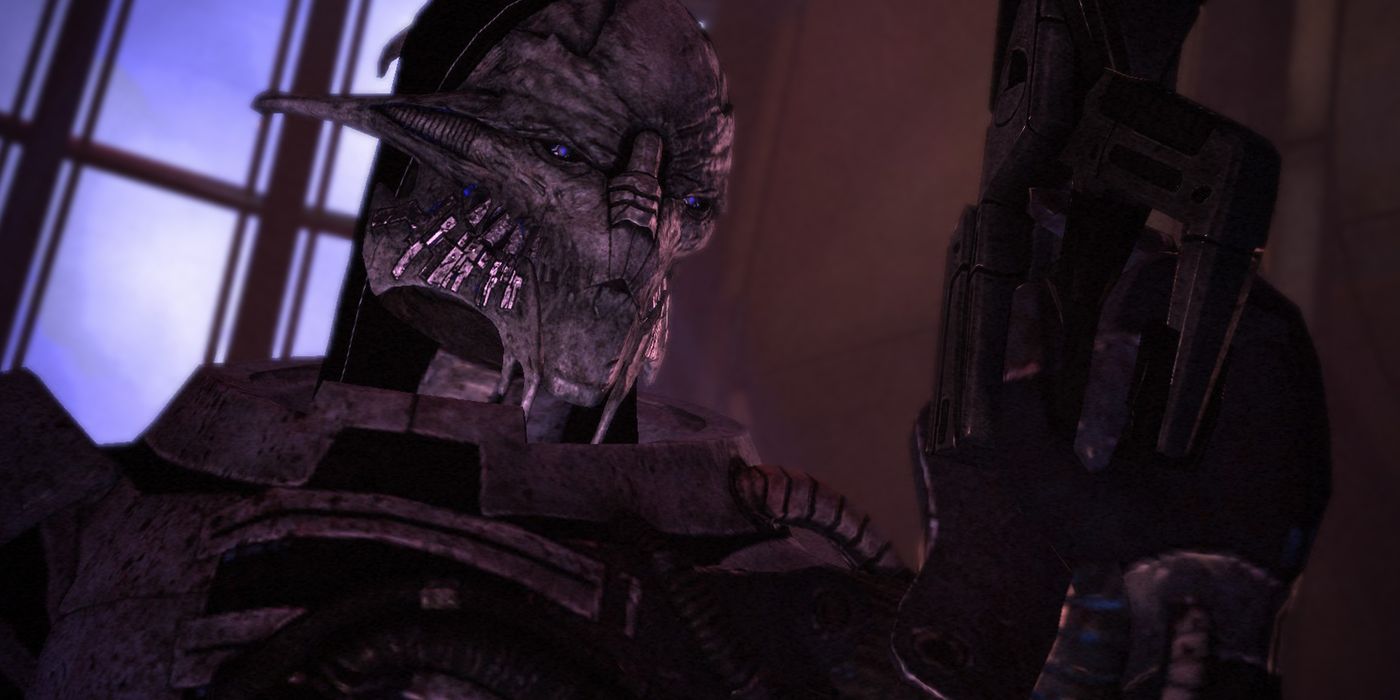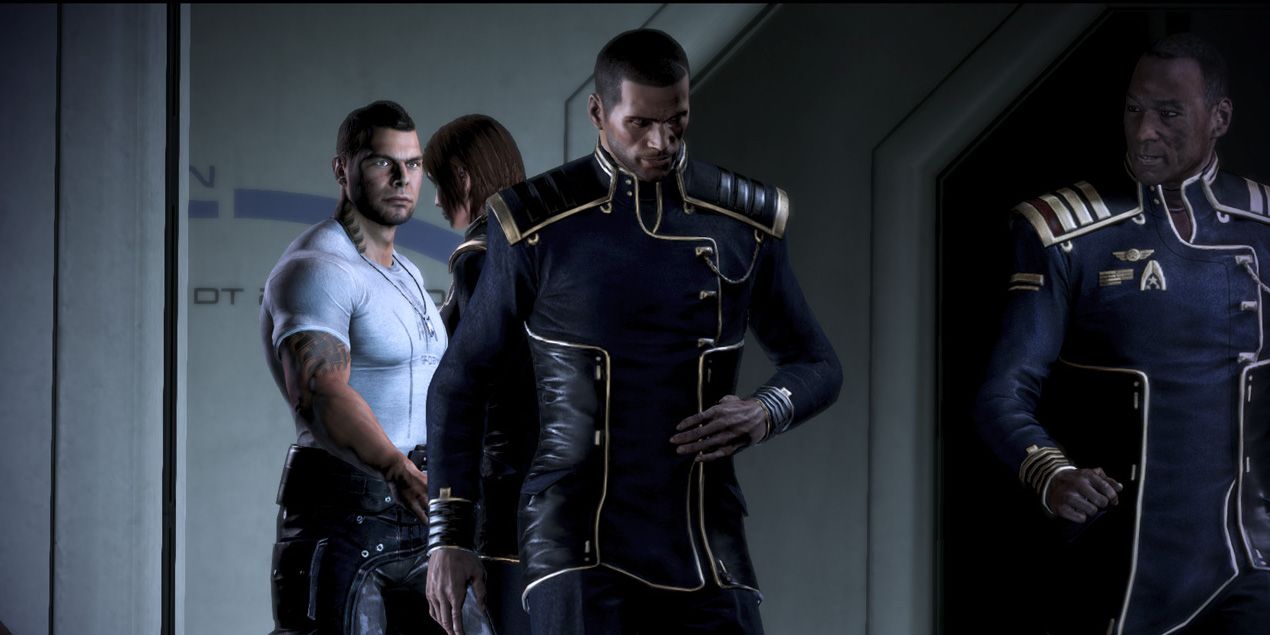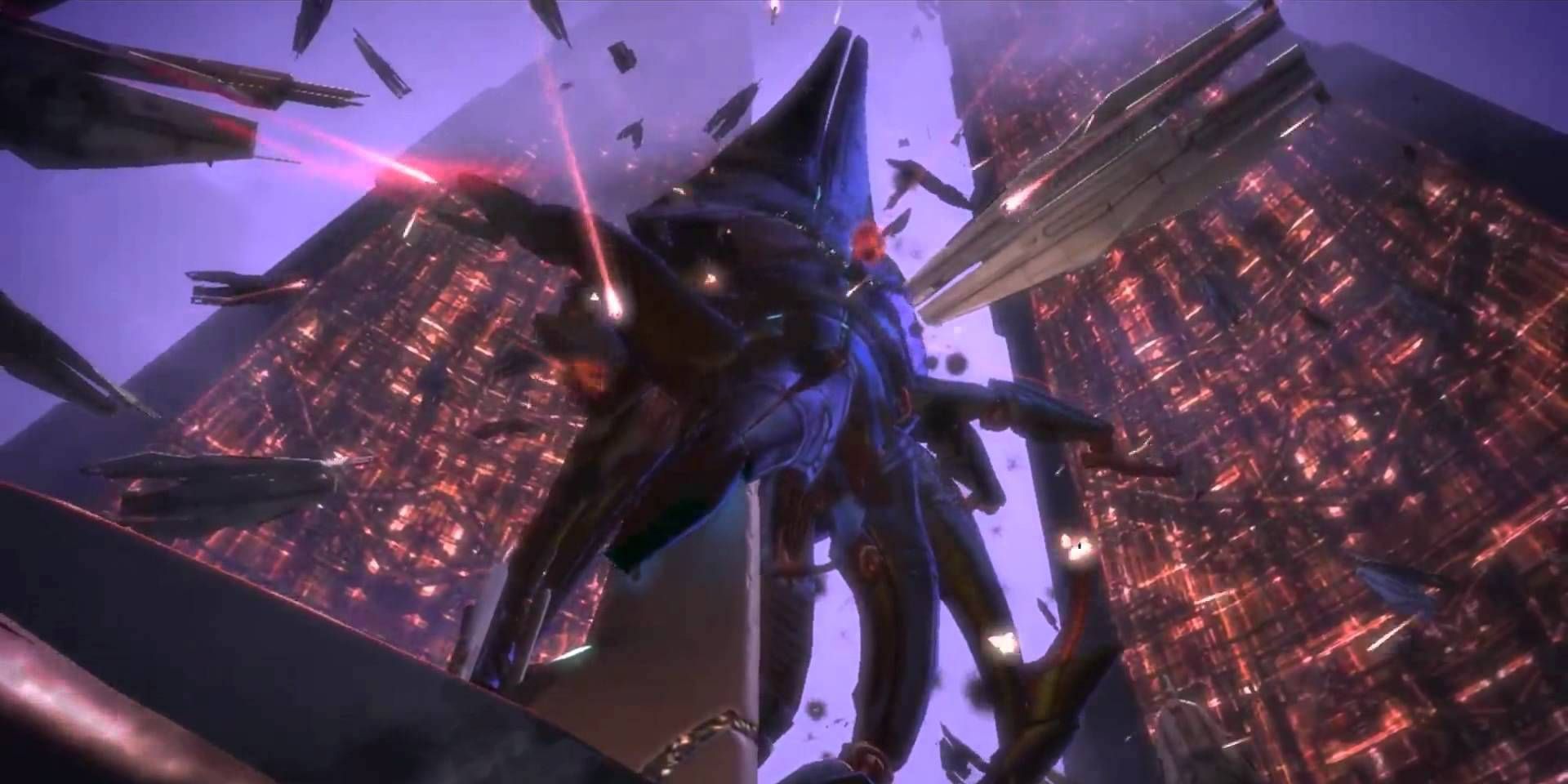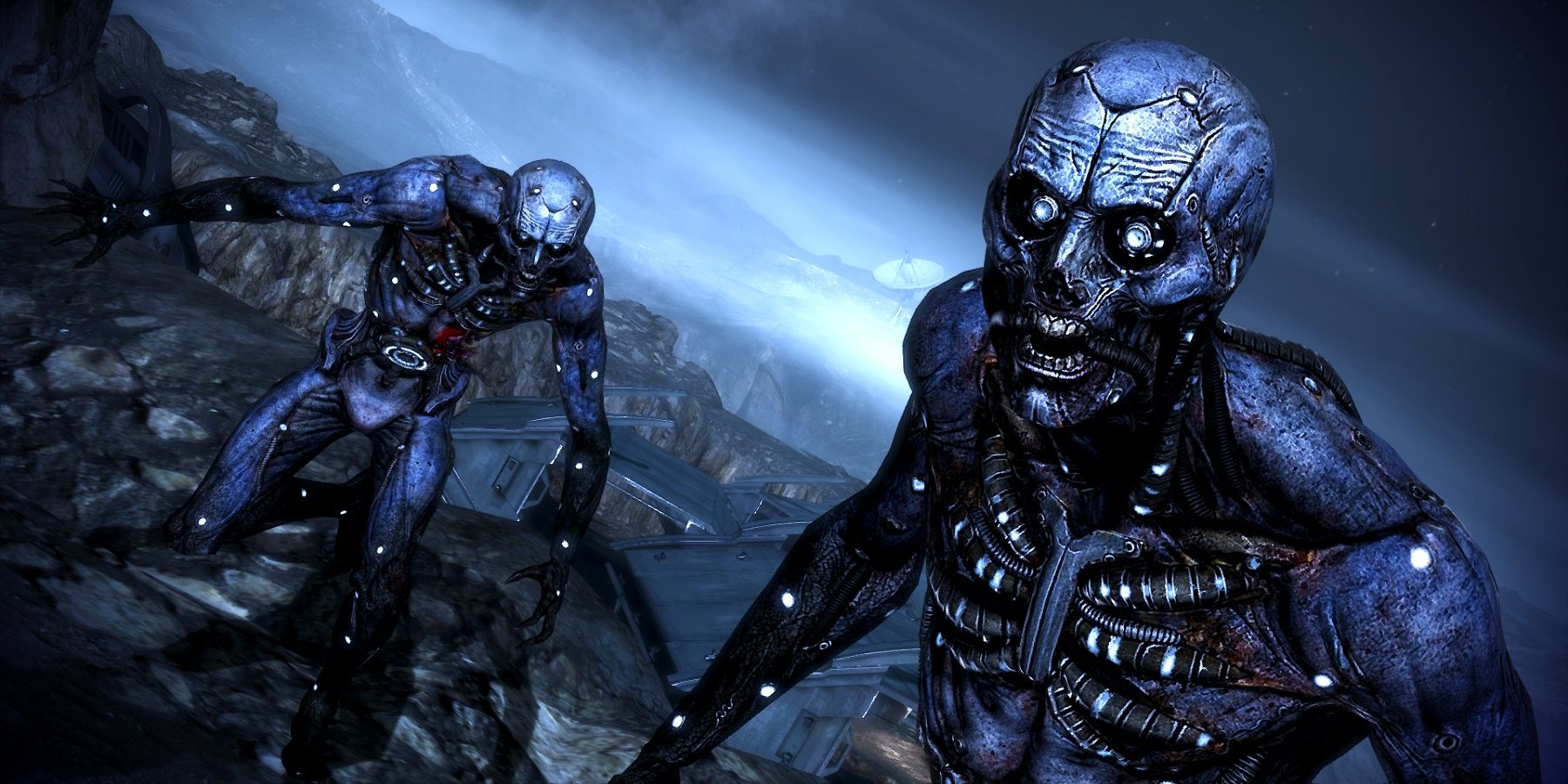No matter what its post-Andromeda future may bring, the Mass Effect saga has made an indelible mark on gaming thanks to its engrossing story, unforgettable characters, and richly detailed universe. But, like so many video game franchises, the Mass Effect universe expands beyond the medium’s borders.
Along with its games, the original Mass Effect trilogy is complemented by five comic series, five separate single-issue comics, an animated movie, and four novels, which will be the focus of this article. The first book, Revelation, serves as a prequel to the first game while the other three – Ascension, Retribution and Deception – are set before the second and third game respectively.
While not indispensable to the understanding of the trilogy’s narrative, these books (for the most part) hold up solidly on their own, and offer characterization and information that brings a little more texture and depth to the games’ backdrop.
Here are 15 Things You Wouldn't Know If You Hadn't Read The Mass Effect Books
15. Who The Illusive Man is
Everybody remembers their first encounter with The Illusive Man: the cigarette, the blue eyes, the dying red giant burning in the background. For many gamers it was exhilarating. But those who had read Mass Effect: Ascension felt a different kind of elation; the kind you experience when you see a literary creation brought to lifelike perfection.
Indeed, The Illusive Man is the very first character to appear in the novel. The prologue opens on him reading news reports of the Battle of the Citadel and pondering its ramifications, before setting his latest project’s in motion.
Throughout the novel, The Illusive Man pops up intermittently to deliver instructions to his agents, receive updates on their progress, and provide insight. His appearances are brief, but they easily constitute one of the book’s highlights.
Seen mainly through the perspective of Cerberus agent Paul Grayson, The Illusive Man gives the reader just enough access into his mind to realize what an evil genius he is. He instills fear in the hearts of his employees, but there’s also an air of calm rationality about him. Reading his scenes makes you appreciate Martin Sheen’s stellar work all the more and further enhances the gaming experience with foreknowledge of just how intelligent, devoted, and dangerous his character really is.
14. David Anderson's marital troubles
Throughout the trilogy, Shepard’s relationship with David Anderson evolves from a formal bond of loyalty to more relaxed camaraderie. In the course of that evolution, we get to know Anderson as a lonely man. And if you’ve read Revelation, the picture becomes just a bit more affecting.
The novel opens with a prologue featuring a young Second Lieutenant Anderson getting briefed by Admiral Jon Grissom. Grissom notes the young graduate’s marital status, and warns him of the hardship of keeping a military marriage together. Flash-forward eight years and Anderson receives a message from his attorney announcing the finalization of his divorce.
While knowledge of his past marriage could be found on the Shadow Broker’s terminal in Mass Effect 2’s Lair of the Shadow Broker DLC, the novel gives a few more details. Such as the disillusion of youthful idealism, the anger and bitter lucidity about its irrationality, and the acceptance of inadequacy as a husband. This knowledge brings additional poignancy to scenes in Mass Effect 3 where he talks wistfully about his desire to settle down when it’s all over.
David Anderson may have found contentment in keeping his people safe and free, but he was never truly happy.
13. Cerberus' influence on Terra Firma
Remember Terra Firma from the first game? You probably walked into one of their rallies while grounded on the Citadel and got chatted up by their leader Charles Saracino in an attempt to get you to publicly endorse them. Otherwise, you may recall that Gunnery Chief Ashley Williams called them a “pack of jackals,” and reacted to their exploitation of the First Contact War by advising Saracino to “shut his pie-hole.”
Given such solid anti-alien pedigree and political power, it figures that Cerberus would have some interest in them. Ascension opens on a flashback dream sequence in which Grayson remembers his role in the assassination of party leader Claude Menneau, which served as his initiation into the organization.
The party and its members don’t play any further role in the narrative, but they do add more color and complexity to humanity’s 22nd century landscape. The assassination serves as a chilling demonstration of the full scope of Cerberus’s ambition and reach.
12. Saren is a horrible Spectre
“He’s rotten. To the core.” Coming from a hardened warrior like Wrex, those are pretty big words, and we all know how well Saren lived up to them. It’s no secret that the rogue Spectre was ruthless even before Sovereign indoctrinated him, but Revelation gives us the opportunity to see just how bad he was. Spoiler alert: the answer is “very.”
We know from Anderson’s account in the first game: the two men joined forces on a mission to capture a rogue scientist in a refinery on Camala and that Saren destroyed that refinery, killing everyone inside as well as nearby civilians due to poisonous fumes. He blamed it on Anderson, thereby ruining Anderson's chance to become the first human Spectre.
You could chalk it up to extreme anti-human prejudice, but keep in mind that Saren’s investigation methods include executing defenseless enemies in cold blood, torturing a thug to death for information, and letting a horribly burned witness die in slow agony after interrogating her.
Saren Arterius may have once been on the right side of the law, but he was never "good.”
11. Cerberus' infiltration of the Ascension Project
The Ascension Project is one of Mass Effect: Ascension’s key plot elements. Jon Grissom Academy is where Kahlee Sanders and a team of Alliance scientists help young biotics understand, control, and develop their powers.
Among the academy’s young biotic students is 12 year old Gillian Grayson (the adopted daughter of Paul Grayson), who has extraordinary untapped power that Cerberus is all too keen to exploit for human dominance. The Illusive Man sends an agent, Doctor Jiro Toshiwa, to infiltrate the academy, gather data, and test Cerberus’ own experimental power-enhancing drugs on her.
Cerberus’s infiltration of the project comes to an end when Kahlee successfully apprehends Toshiwa (who had seduced her as part of his assignment). However, Gillian is considered too valuable for The Illusive Man to give up, so he orders her father to extract her from the Academy and bring her to a Cerberus facility.
This leads to a series of events during which Grayson finds himself increasingly torn between his loyalty to Cerberus and his concern for his daughter. Ultimately, he chooses to help Kahlee hide his daughter away from The Illusive Man.
10. The Systems Alliance isn't above breaking the law
Mass Effect’s morality system grows a little more complex from game to game, but one fundamental assumption remains consistent: The Systems Alliance, while flawed, is a morally righteous institution. Unlike Cerberus, the Alliance seeks cooperation and always respects sapient rights.
True, they may occasionally bend or circumvent the rules but, ultimately, they’ll always do the right thing. After all, they’re the good guys; they would never sink to doing anything illegal or unethical like, say, experimenting with artificial intelligence in defiance of Citadel Conventions, right?
Well, as it turns out, in Revelation the Alliance creates AI simulations in the hopes of developing technology that would give humanity an edge over other species. When a secret research facility gets attacked by mercenaries, their illegal activities soon gain the Council’s attention, leading Ambassador Anita Goyle to explain herself before them.
Faced with impending sanctions, Goyle defiantly justifies the Alliance’s risk-taking and uses humanity’s status as a rising power to negotiate their penalties, turning what should have been a punishment into a small victory. It’s a gutsily Machiavellian move that manages to color the nominal good guys’ side with just a few more shades of gray.
9. Captain Anderson and Kahlee Sanders used to be an item
David Anderson has always put duty above personal relationships, yet dialogue in the third game makes it clear he and Kahlee Sanders share feelings for each other. If you’ve read the novels, you’ll know how deep these feelings are.
The two first meet in Revelation, where Kahlee is on the run from both Citadel authorities due to her knowledge on the illegal AI research of the Alliance. Due to his past service with her father, Anderson earns Kahlee's trust and the two begin to work together. By the end of their adventure, the they acknowledge their mutual attraction but decide to part ways in order to focus on their respective careers.
They meet again in Retribution, when Kahlee goes to Anderson with years’ worth of Cerberus data sent to her by Grayson just before his capture. The two are forced to go through danger again as they battle pirates, Cerberus agents, and the Reapers, in order to postpone their invasion. By the novel’s conclusion, they share a kiss, leaving the door open for a relationship. That relationship is made abundantly clear in Deception: they share an apartment on the Citadel and have an active sex life.
8. How Saren met Sovereign
As a prequel to the first game, Mass Effect: Revelation does many things: it (re)introduces the player to the game’s most important supporting characters, provides additional insight into their behaviour and actions, and clarifies events that set the stage for the game’s plot. It also tells us how Saren came across Sovereign.
As it turns out, the secret AI project the Alliance is working on involves an ancient alien artifact of great power and mysterious origin. The more Saren learns about it, the more interested he becomes in finding it for himself.
By the novel’s conclusion, Saren has discovered that the artifact is an enormous starship named Sovereign. He then plans to use Sovereign as a weapon against humanity. Knowing this makes his actions in the game both doubly tragic and sadly ironic. Initially guided by mere power-lust and hatred for humans, his fall from grace is ultimately motivated by a much nobler and altruistic cause: saving all life in the galaxy.
7. Aria T'Loak has a daughter
When you’re a 300 year old asari criminal mastermind with decades' worth of adventures as Omega’s undisputed ruler, you’re bound to have given birth to at least one or two children along the way. So it likely came as little surprise to readers of Mass Effect: Retribution to learn that Aria T’Loak did indeed sire at least one daughter, Liselle, who also served as one of Aria’s many lieutenants. When Liselle's body is found in her human lover’s bed, with the lover in question gone, Aria naturally blames him for the crime and seeks revenge.
This lover happens to be Paul Grayson, a recently hired mercenary (following his defection from Cerberus). The murder turns out to be Kai Leng, who The Illusive Man had tasked with finding and kidnapping Grayson. Liselle’s murder prompts Aria to start a relentless manhunt for Grayson.
This takes on even greater significance when an indoctrinated Paul escapes from Cerberus custody with help of his new Reaper implants, The Illusive Man strikes an alliance with Aria in order to find Grayson. Through her death, Liselle unwittingly plays a pivotal role in Cerberus’s eventual takeover of Omega, which is depicted in full in Invasion.
6. Life in the Migrant Fleet
The quarians have earned their place as one of the most fascinating alien species in the Mass Effect universe, particularly with regards to their morally complex conflict with the Geth and the perpetual outsider status symbolized by their familiar enviro-suits.
That being said, the fact that every in-game encounter with the Migrant Fleet has occurred within the context of political intrigue does somewhat limit our perspective of their society and culture. However, in Ascension, Kahlee, Gillian, and Grissom Academy’s security chief, Hendel Mitra, find refuge from Cerberus in the Migrant Fleet thanks to the assistance of Lemm, a young quarian on his pilgrimage.
During their brief stay, the trio becomes acquainted with a chirpy young security officer named Seeto, who gives them a tour of the ship’s trading deck and living quarters. Through his commentary, we get a few glimpses of everyday life in a society where notions of intimacy, property, and civilian life bear little resemblance to our own. It immerses the reader deeper into quarian culture and (for lack of a better word) further humanizes its people.
5. Cerberus attacked the Migrant Fleet
Sadly, the peaceful interlude ends quickly when Grayson and a small crew of Cerberus agents, with help from a quarian exile named Golo, infiltrate the fleet. The Cerberus forces start a violent battle with the unprepared quarians that results in many casualties.
Their plan was to grab Gillian, create a diversion, then escape on another shuttle. Their plan fails thanks to Grayson’s last-minute change of heart and Gillian is granted permanent asylum on the Migrant Fleet, far beyond The Illusive Man’s reach.
This attack has profound political repercussions within quarian society: for the first time in three centuries, an enemy force has broken into the fleet and killed innocent quarians. This sudden realization of their people’s vulnerability pushes the Conclave and the Admiralty Board to approve exploratory missions in uncharted space, moving the focus of fleet policy from mere survival to active attempts at colonization.
In other words, Cerberus’s attack is partially responsible for political decisions that eventually led to the end of the Quarian-Geth conflict.
4. First-hand experience of Reaper Indoctrination
Under The Illusive Man’s supervision, Grayson is forcefully implanted with nanotechnology and drugged with red sand in order to be made more susceptible to indoctrination. The reader experiences most of this from Grayson’s point of view, and it’s both illuminating and terrifying.
Grayson’s consciousness progressively detaches itself from both his physical self as the whispers in his head become louder and clearer, amplifying his strength and power, while simultaneously transforming him into a monstrous Cronenbergian cyborg.
We feel his helplessness as forces beyond his comprehension take control of his body and set him loose on the galaxy. We suffer with him as he struggles to keep control and hide as much information as he can from his unseen oppressors.
We’ve seen Reaper indoctrination at work several times in the trilogy, but we’ve never been given a fully comprehensive experience of the process, let alone from a victim’s point of view. To see it done in Retribution gives us a genuinely disturbing demonstration of the insidious and seemingly unstoppable nature of the Reapers’ power. It also provides a few glimpses into their mindset.
3. The Illusive Man almost died
The Illusive Man has evaded failure and capture thanks to back-up plans, diversionary tactics, and layers of protection and secrecy. By the time Shepard and the Alliance finally track and raid his headquarters in Mass Effect 3, he is, as always, one step ahead. Yet just over a year before, Citadel authorities managed to take the galaxy’s most dangerous human completely by surprise in a raid that could very well have ended in his capture or death.
Thanks to files sent to her by Grayson, Kahlee Sanders is able to give Anderson and turian ambassador Orinia enough intelligence to mount a special task force against several Cerberus targets. Awoken by the raid, the leader of Cerberus found himself alone against a squad of armed turian commandos with nothing but a pistol, kinetic barriers, and a covering beam standing between them.
All odds pointed towards capture but according to the narration, “he was damned if he was going to let them take him alive.” This suggests that The Illusive Man was preparing to die.. Luckily for him, he was rescued from martyrdom by the intervention of Kai Leng.
2. Deception messed everything up
As lead writer of the first game and co-writer of the second game, it made sense for Drew Karpyshyn to pen the franchise’s novels. Sadly, his departure from the team shortly after the second game’s conclusion meant that the fourth novel, Deception, was written by someone else. That someone else turned out to be franchise outsider William C. Dietz.
Riddled with continuity errors and imbecilic characterizations, Deception is almost impressive in its stubborn failure to get a single thing right. It focuses on Gillian, now 18 years old, despite the fact that it takes place just after Retribution. In it Hendel Mitra, the first openly gay male character in Mass Effect media, is seen ogling an asari stripper. The list of discrepancies goes on.
Characters join biotic cults and embark on murder-revenge schemes for no reason; Kai Leng gets captured by a bunch of amateur teenage terrorists, pees in a vase while staking a target out, and, most infamously of all, concludes his bugging of Anderson’s apartment by helping himself to a bowl of cereal.
The backlash against Deception was so great that Bioware publicly promised a revised edition where all continuity issues would be resolved. Five years have passed, however, and no further news has been announced.
1. Kai Leng was a badass
Mass Effect 3 may have been a fine game as a whole, but its disappointments couldn’t be ignored. Aside from its controversial ending, one of these disappointments was supporting villain Kai Leng.
Despite a cool sword, a cyberpunk-esque outfit, and the voice of Troy Baker, the man hyped up as Cerberus’s deadliest enforcer turned out to be little more than a generic video game boss. This disappointment was even greater among those who had read Retribution because the character on screen bore little resemblance to the formidable adversary introduced in the novel.
After capturing Grayson and murdering Liselle to throw the scent off Cerberus, Kai Lengs shows himself as a valuable member of Cerberus. He also saves the Illusive Man from capture by single-handedly taking on five armed elite turian commandos. He then hunts down the Reaper-modified Grayson, with whom he engages in a fight that nearly costs him his life.
Even after getting both his legs shot by Anderson in the climax, he still manages to escape unarmed. Deception may have turned him into a joke and Mass Effect 3 may have done a poor job of portraying him, but at least one book properly depicts Kai Leng as a force to be reckoned with.
---
Did you read the Mass Effect novels? Can you think of any other facts that were ignored in the games? Let us know in the comments.

